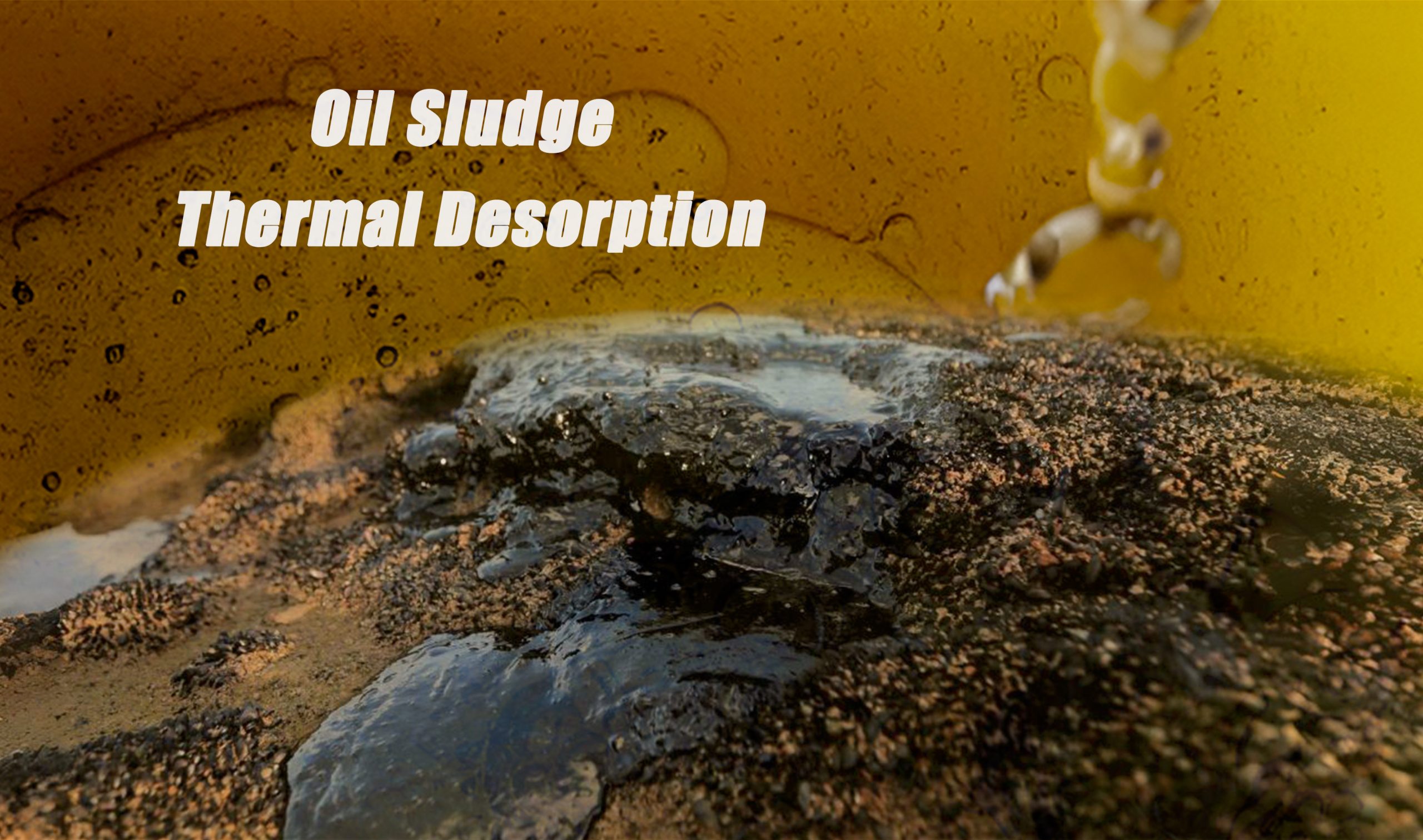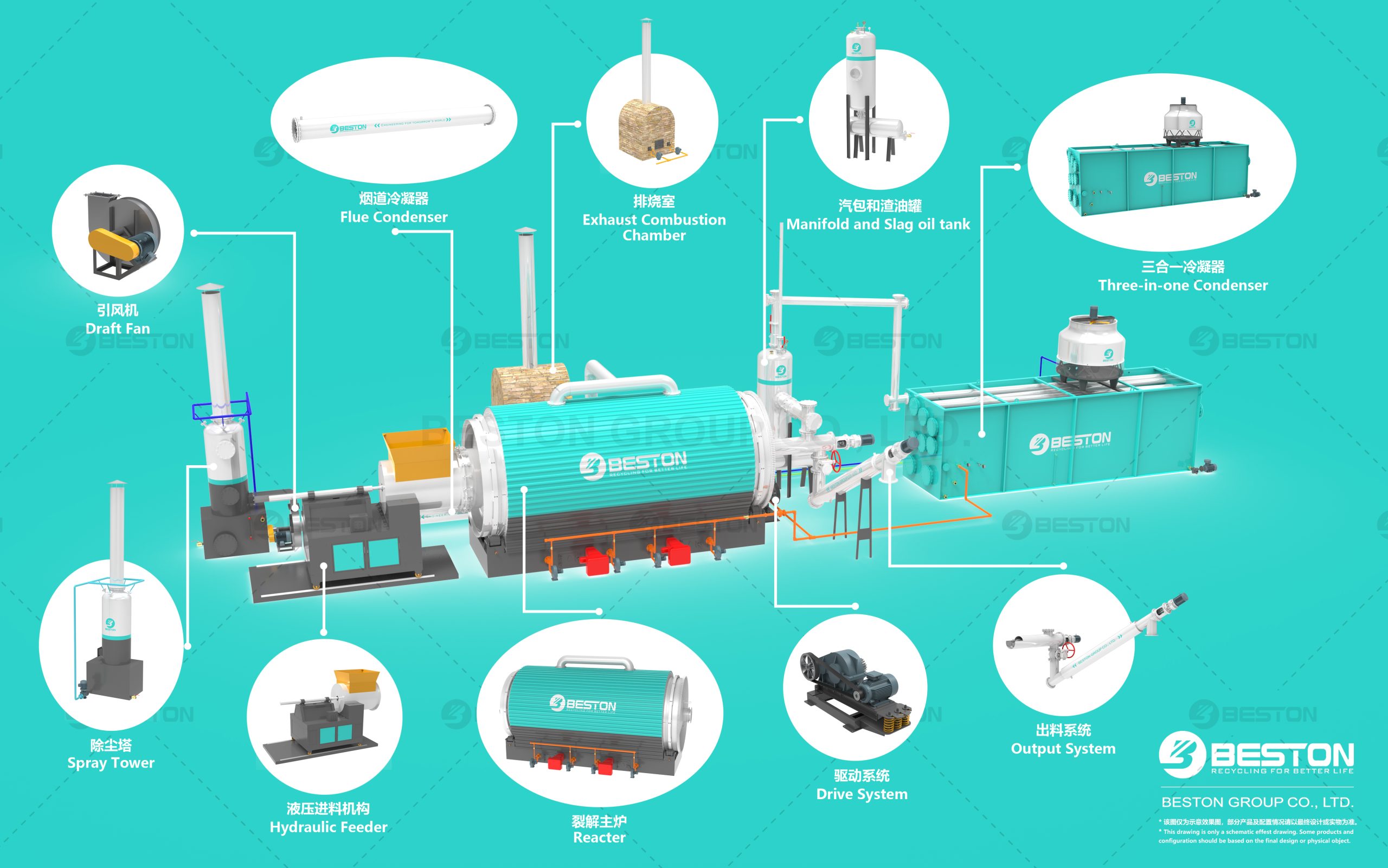Beston Group is at the forefront of pyrolysis technology, offering innovative and sustainable solutions for converting various types of waste into valuable resources. Their pyrolysis plants are designed to address the growing global demand for waste management solutions, especially in reducing pollution and supporting a circular economy. In this article, we will explore three distinct pyrolysis plant solutions offered by Beston: oil sludge pyrolysis, tire pyrolysis, and plastic pyrolysis. Each solution has unique benefits tailored to different types of waste, demonstrating the versatility and impact of Beston’s technology.
Oil Sludge Pyrolysis: Reducing Hazardous Waste and Recovering Valuable Products
Oil sludge, a byproduct of oil extraction, refining, and industrial processes, is considered a hazardous waste due to its high contamination levels and environmental impact. Traditionally, managing oil sludge has posed significant challenges. Beston’s oil sludge pyrolysis plant offers a highly effective solution for turning this problematic waste into useful byproducts, including fuel oil, carbon black, and combustible gas.

How the Oil Sludge Pyrolysis Plant Works
The process begins with the oil sludge being loaded into the pyrolysis reactor. In the absence of oxygen and under high temperatures, the organic components of the sludge break down into oil, gas, and solid residues. The pyrolysis process typically involves the following steps:
- Pre-treatment: Oil sludge may need to be pre-treated to remove large solids and water content, ensuring the efficiency of the pyrolysis process.
- Pyrolysis: The oil sludge is heated in a sealed reactor under anaerobic conditions. This process decomposes the hydrocarbons into oil and gas.
- Condensation and separation: The vapor produced during pyrolysis is cooled, condensed, and separated into different components like liquid fuel (fuel oil) and gases.
- Post-treatment: The solid residue, which is mostly carbon black, is further processed or utilized in various applications.
Tire Pyrolysis: Sustainable Solution for Waste Tires
With billions of tires being discarded each year, tire waste has become a significant environmental problem. Beston’s tire pyrolysis plant offers an efficient way to process used tires, recovering valuable materials while reducing the ecological footprint.
How the Tire Pyrolysis Plant Works
Tires contain rubber, carbon black, steel, and oils, all of which can be converted into usable products. Beston’s tire pyrolysis technology breaks down tires into:
- Fuel Oil: A high-energy liquid fuel that can be used as a substitute for diesel, oil, or other fuels in industrial processes.
- Carbon Black: A material used in the production of new tires, ink, paint, and other products.
- Steel Wire: A byproduct that can be separated and recycled.
- Syngas: A mixture of gases that can be used as an energy source to fuel the pyrolysis plant itself, reducing external energy costs.
The process involves heating the shredded tires in a reactor, which, in the absence of oxygen, causes the tires to break down into smaller components.

Key Benefits of Tire Pyrolysis
- Waste Reduction: Tire pyrolysis helps reduce the number of tires sent to landfills or incinerators, alleviating the burden on waste management systems.
- Resource Recovery: The products derived from tire pyrolysis can be reused in various industries, reducing the need for virgin materials and conserving resources.
- Energy Production: The production of fuel oil and syngas offers a renewable energy source that can replace conventional fuels.
- Circular Economy: Tire pyrolysis plays a critical role in the circular economy by recycling end-of-life tires into valuable materials, thus contributing to sustainable development.
Plastic Pyrolysis: Turning Plastic Waste into Oil and Gas
Plastic waste is one of the most persistent environmental issues facing the world today. Beston’s plastic pyrolysis plant provides a comprehensive solution to tackle plastic pollution by converting plastic waste into valuable products, such as fuel oil, carbon black, and industrial gas.
How the Plastic Pyrolysis Plant Works
The plastic pyrolysis process is similar to tire pyrolysis, where plastics are heated in the absence of oxygen to break them down into different byproducts. The primary products from plastic pyrolysis include:
- Fuel Oil: A liquid product that can be used as a replacement for diesel or other industrial fuels.
- Gas: Syngas, primarily composed of methane, propane, and hydrogen, which can be used to fuel the pyrolysis process or be converted into electricity.
The process involves sorting and shredding plastic waste into smaller pieces before feeding it into the pyrolysis reactor. After heating, the plastic breaks down into oil and gas, while the solid residue is carbon black.
Beston Pyrolysis Plant Features and Advantages
Regardless of the specific solution—oil sludge, tire, or plastic pyrolysis—Beston’s pyrolysis plants share several key features that make them stand out in the industry:
- High Efficiency: Beston pyrolysis plants use advanced heating technology to ensure high thermal efficiency, enabling the conversion of waste into valuable products with minimal energy consumption.
- Environmental Safety: All Beston pyrolysis plants are equipped with advanced pollution control systems, such as dedusting, desulfurization, and de-NOx equipment, to ensure the safe and environmentally friendly operation of the plant.
- Fully Automatic Control: Beston plants are designed with an automated control system, which minimizes manual intervention, ensuring a smooth and efficient operation.
- High-Quality Materials: The reactors and other core components of Beston pyrolysis plants are made from high-quality steel, ensuring durability and long service life.
- Recycling and Sustainability: The plants are designed to support the circular economy by recycling waste and converting it into useful products like oil, carbon black, and gas, which can be further processed or sold for other uses.
Conclusion
Beston pyrolysis plants offer innovative and sustainable solutions for handling some of the most challenging waste streams, including oil sludge, tires, and plastics. Through pyrolysis technology, Beston helps reduce environmental pollution, recover valuable resources, and contribute to a circular economy. Whether you’re looking to process oil sludge, recycle waste tires, or convert plastic waste into fuel, Beston’s pyrolysis solutions are designed to meet the specific needs of businesses and industries worldwide.
By investing in Beston’s pyrolysis plants, companies can not only address waste management challenges but also create profitable, eco-friendly businesses that support sustainable development.